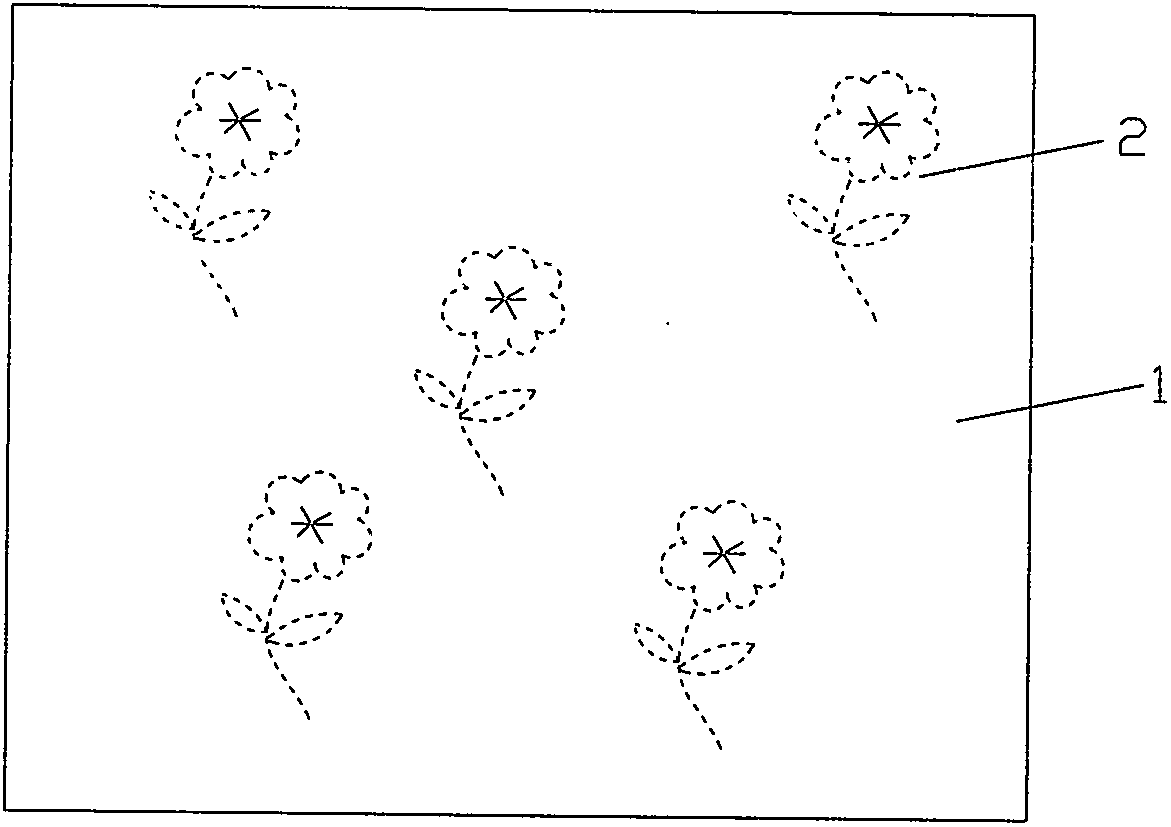Wood pulp fiber/silk interweaved furnishing burnt-out fabric
A wood pulp fiber and fabric technology, which is applied in the field of textile fabrics and fabrics, can solve the problems of alkali resistance, acid resistance, blurred pattern details, and pattern distortion, and achieves a strong three-dimensional sense, delicate hand feel, and realistic pattern. Effect
- Summary
- Abstract
- Description
- Claims
- Application Information
AI Technical Summary
Problems solved by technology
Method used
Image
Examples
Embodiment Construction
[0012] see figure 1 , the present invention relates to a burnt-out fabric, comprising a burnt-out fabric body 1, the burnt-out fabric body 1 is formed by interweaving warp threads and weft threads, the warp threads are wood pulp fibers, and the weft threads are real silk, the burnt-out fabric body 1 There is an embroidery layer 2 partially on the surface. The embroidery layer 2 is a layer embroidered on the surface of the burnt-out fabric body 1 with colored threads, and is used to outline the subtleties of the pattern shown by the burn-out fabric body 1 to make the pattern more realistic.
PUM
 Login to View More
Login to View More Abstract
Description
Claims
Application Information
 Login to View More
Login to View More - R&D
- Intellectual Property
- Life Sciences
- Materials
- Tech Scout
- Unparalleled Data Quality
- Higher Quality Content
- 60% Fewer Hallucinations
Browse by: Latest US Patents, China's latest patents, Technical Efficacy Thesaurus, Application Domain, Technology Topic, Popular Technical Reports.
© 2025 PatSnap. All rights reserved.Legal|Privacy policy|Modern Slavery Act Transparency Statement|Sitemap|About US| Contact US: help@patsnap.com

